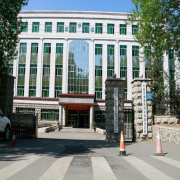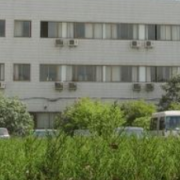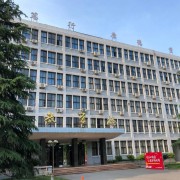牛津大学位于哪里?英国牛津大学简介
来源:择校网 时间:2025-02-03 08:33:04
一、牛津大学英语简介
牛津大学简称牛津(Oxford),是一所位于英国牛津市的世界著名公立研究型大学。实际创立日期仍不清楚,但有记录的授课历史可追溯到1096年。为英语世界中最古老的大学,也是世界上现存第二古老的高等教育机构,是世界著名研究型大学之一。牛津同时拥有全球最具规模的大学出版社,及全英最大型的大学图书馆系统。牛津大学培养了众多社会名人,包括了26位英国首相、60位诺贝尔奖得主以及数十位世界各国的皇室成员和政治领袖。下面我为大家带来旅游英语牛津大学英语简介,欢迎大家阅读!
Oxford is a unique and historic institution. As the oldest English-speaking university in the world, it lays claim to eight centuries of continuous existence. There is no clear date of foundation, but teaching existed at Oxford in some form in 1096 and developed rapidly from 1167, when Henry II banned English students from attending the University of Paris.
In 1188, the historian, Gerald of Wales, gave a public reading to the assembled Oxford dons and in 1190 the arrival of Emo of Friesland, the first known overseas student, initiated the University's tradition of international scholarship. By 1201, the University was headed by a magister scolarum Oxonie, on whom the title of Chancellor was conferred in 1214, and in 1231 the masters were recognized as a uniuersitas or corporation.
In the 13th century, rioting between town and gown(students and townspeople) hastened the establishment of primitive halls of residence. These were succeeded by the first of xford's colleges or endowed houses whose architectural splendour, together with the University's libraries and museums, give the city its unique character. University, Balliol and Merton Colleges, established between 1249 and 1264, were the oldest.
Less than a century later, Oxford had achieved eminence above every other seat of learning, and won the praises of popes, kings and sages by virtue of its antiquity, curriculum, doctrine and privileges. In 1355, Edward III paid tribute to the University for its invaluable contribution to learning; he also commented on the services rendered to the state by distinguished Oxford graduates.
Oxford early on became a centre for lively controversy, with scholars involved in religious and political disputes. John Wyclif, a 14th-century Master of Balliol, campaigned for a bible in the vernacular, against the wishes of the papacy. In 1530, Henry VIII forced the University to accept his divorce from Catherine of Aragon. During the Reformation in the 16th century, the Anglican churchmen Cranmer, Latimer and Ridley were tried for heresy and burnt at the stake in Oxford. The University was Royalist in the Civil War, and Charles I held a counter-Parliament in Convocation House.
In the late 17th century, the Oxford philosopher John Locke, suspected of treason, was forced to flee the country. The 18th century, when Oxford was said to have forsaken port for politics, was also an era of scientific discovery and religious revival. Edmund Halley, Professor of Geometry, predicted the return of the comet that bears his name; John and Charles Wesley's prayer meetings laid the foundations of the Methodist Society.
The University assumed a leading role in the Victorian era. The Oxford Movement, led by John Henry Newman, broke from the Anglican Church in the 1840s. Twenty years later, the new University Museum was the site of a famous debate between Thomas Huxley, the champion of evolution, and Bishop Wilberforce.
From 1878, academic halls were established for women, who became members of the University in 1920. Since 1974, all but one of Oxford's 39 colleges have changed their statutes to admit both men and women. St Hilda's remains the only women's college.
In the years since the war, Oxford has added to its humanistic core a major new research capacity in the natural and applied sciences, including medicine. In so doing, it has enhanced and strengthened its traditional role as a focus for learning and a forum for intellectual debate.
The University of Oxford's total student population numbers just over 16,100(students in residence, 1998-9).
Almost a quarter of these students are from overseas, including the countries of the European Union.
More than 130 nationalities are represented among our student body.
Almost 5,000 students are engaged in postgraduate work. Of these, around 3,000 are working in the arts and humanities.
Oxford's current academic community includes 76 Fellows of the Royal Society and 105 Fellows of the British Academy. A further 97 Emeritus and Honorary College Fellows are also Fellows of the British Academy, and 142 Emeritus and Honorary College Fellows are Fellows of the Royal Society.
二、英国牛津大学简介
1、牛津大学建立于13世纪,世界十大学府之一,以美丽的大学城闻名全世界,童话故事---爱丽丝梦游仙境即以此地为故事背景。在牛津处处都是优美的哥德式尖塔建筑,因此有「尖塔之城」之称。牛津大学是英国第一所国立大学,培育出无数的顶尖杰出人士。牛津大学产生了至少来自6个国家的10位国王,6位英国国王,46位诺贝尔奖获得者,来自19个国家的53位总统和首相,包括25位英国首相(其中13位来自基督教堂学院),3位圣徒,86位大主教以及18位红衣主教。
2、牛津大学(University of Oxford,拉丁文:Universitas Oxoniensis,简称Oxon.)位于英国牛津市,是英语世界中最古老的大学。在九个世纪的历史中,一直是英国乃至世界级的顶尖学府。牛津大学和剑桥大学时常被合称为牛剑。它们两所作为英格兰最古老、最著名的大学,有着很久的竞争渊源。牛津大学被英国泰晤士报连续五年评为综合排名第一的大学。在泰晤士高等教育增刊里牛津大学在世界名列第三。牛津大学是英国研究型团体罗素大学集团(Russell Group of Universities),欧洲的大学联盟科英布拉集团(Coimbra Group), LERU(League of European Research Universities)和Europaeum中的一员。、牛津大学历史悠久,但始建于哪一年,没有人能确切说得出来。牛津大学的创始故事颇为传神,根据当地人的说法,牛津大学创始于1167年,当时英王亨利二世下令禁止英国的神学学生到巴黎大学研究神学或宗教,因而一帮宗教学者及学生慢慢聚集于此,逐渐演变成学院的雏形。换言之,牛津大学的成立是因早期“人才外流”的问题。不过,也有资料表明它的教学活动可追溯到1096年,如果从那时算起,牛津的历史超过了900年。毫无疑问,牛津大学是现存人类历史上最早的大学之一。有的历史学家说,默顿学院(Merton College)是最早的学院;亦有人说,大学学院(University College)才是大学的滥觞。不管哪一种说法正确,都无损于今日由46个学院所组成的牛津大学在学术上的崇高地位。公元1214年,当时天主教在此的教宗潘道尔夫赋予神学院特权,准许学者及学生在此城居住及学习后,市民与学者之间的长期抗争因而结束。16世纪下半叶,才建立起所有的学生都住在学院内的传统。早期所有的学院只收男研究生,直到公元1912年牛津大学才有三项重大的改变:准许女性学生入学,古希腊文不再是必修科目。而在经过700年的独立自主后,牛津大学终于愿意接受政府的补助,但政府仍无权干涉校务。牛津由一个中央学校(包括校和系图书馆,以及科学实验室),39个学院以及7个永久私人公寓(Permanent Private Halls,PPHs)。这些学院并不只是宿舍,而是实质上负责本科生和研究生的教学。有些学院只接受研究生,而有一个学院根本就不招收学生。牛津的学院系统产生于大学诞生之时,并逐渐成为牛津市独立机构的集合体。与大多数其他大学组织结构相似,牛津大学又根据专业分为不同的系。系通常在研究生教学中扮演主要角色,提供讲座、课程以及组织考试。系也通常是被外部机构包括大型研究委员会资助的研究中心。本科生入学由独立的学院批准,它们的学生将在学院接受导师教育,并在大学接受讲座和课程教育。而研究生的通知书则由各系首先决定,然后是与之相关的学院。与美国的精英学校(主要是私立)不同,牛津(和剑桥)是公共机构,它们不能公然的表现“捐赠偏好”,即一个父母富有的孩子将比一个跟哈佛大学毫无关系的孩子在申请此校时占有较大的优势。本科生必须信仰英国国教的要求于1871年废止。1920年之前,古希腊知识为必须。1960年前,则需要懂得拉丁语。而女性直到1920年后才能够得到牛津学位。
三、牛津大学的英文
1、牛津大学的英文是UniversityofOxford.
2、牛津大学位于英国牛津,是一所公立研究型大学,采用传统学院制。是罗素大学集团成员,被誉为“金三角名校”和“G5”之一,全球大学校长论坛成员。牛津大学的具体建校时间已不可考,但有档案明确记载的最早的授课时间为1096年,之后在1167年因得到了英国王室的大力支持而快速发展。
3、牛津大学是英语世界中最古老的大学,也是世界上现存第二古老的高等教育机构。从1902年起,牛津大学还设立了面向全世界本科生的“罗德奖学金”。
4、构成牛津大学的学院有许多在13至16世纪之间创立,基督教会学院是1525年渥西枢机主教创建,作为培训主教的教会学院。汤姆方园里的塔楼上半部是列恩在1682年建造,为本市最大型塔楼。
关于牛津大学位于哪里,英国牛津大学简介的介绍到此结束,希望对大家有所帮助。







